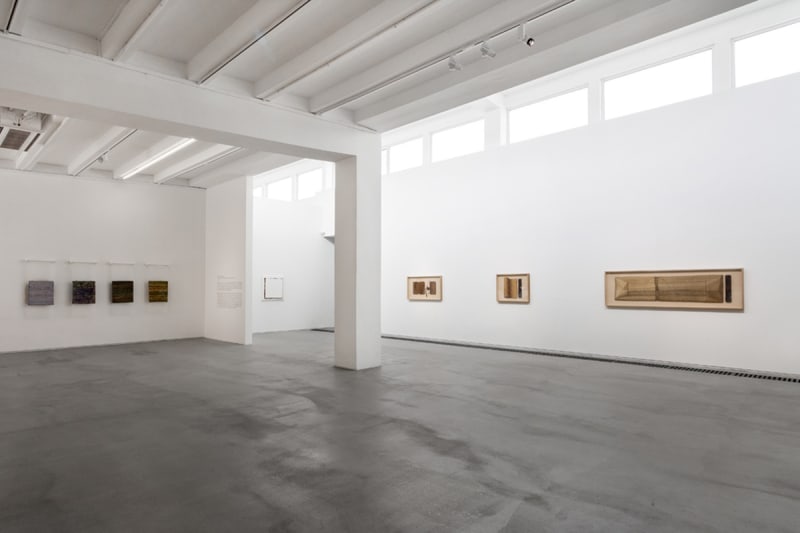This is a group exhibition of artists Ma Shuqing, Shen Kelong, Jiang Ji’an, and Hang Chunhui. The exhibition aims to present an investigation into the notion of “matter” within the realm of painting in both the East and the West, as well as explorations into the aesthetics of “matter” as painting (art) and its significance in understanding the intrinsic nature of art. The study of “matter” is paramount in Heidegger’s philosophy. Heidegger proposes that there are three modes of being: substance (naturally-derived), utility (a manmade object created for specific needs), and existence (art). Materiality is the intrinsic nature of matter. In the understanding of an ancient Chinese philosopher named Zhuangzi, it is believed that it refers to the self-being of matter, which is the intrinsic nature of a matter as it is naturally. Art as “matter” is often overlooked or concealed because of its unique aesthetics quality… matter has included it through a certain approach or construct to allow the materiality of everyday matter to be felt again via a certain way. While the visual and philosophical discourses on the existence of “matter” in the context of modern art ensue, “Tao” (the way) in traditional Chinese philosophy is connected to the “World” in Western philosophy.
Artist Ma Shuqing believes artworks are matter first, and matter is tangible. The message that matter conveys is sensible; it exists within the senses of sight, hearing, and touch, as well as color, sound, roughness, and hardness. Through repeated alterations in the process of painting, the painter has allowed it to become a unique “matter” of art. Ma Shuqing attempts to reset his artwork to its original state to become a tangible, touchable matter, to bring the artwork closer yet distance its meaning.
“Lacquer” is a material rich in cultural uniqueness and historical significance, evoking a feeling of density and strength. As the materiality of lacquer transforms to attach itself to literariness and spirituality, every creative process becomes a magical experience, as if embarking on a spiritual pilgrimage, again and again. Artist Shen Kelong attempts to transform the tradition and the unique materiality of lacquer as well as its embedded cultural significance, envisioning in a contemporary form.
“To view matters through matters, to create matters by matters, and to perceive matters with meditation” is the way in which artist Jiang Ji’an views art and the fundamentals of philosophical concepts. In regards to the construct of traditional painting, what remains after stripping away the image is “matter”. The qualities of “matter” and “readymade” become the ontology of painting today. As a manifestation of matter, painting emphasizes on the sense of touch to become matter.Painting is no longer a two-dimensional substantivewhich exist externally from matters, but thevarious notes of the matter thing-in-itself. Painting unites with matters and result in their great spiritual joy.
For artist Hang Chunhui, the question lies in how to re-examine the relationship between materiality and its form through an Eastern approach. Brush and ink, xuan paper, bas-relief and other traditional materials are used to discuss how materiality creates a new, undefined boundary within form and structure. In other words, the connoted relationship of the form and matter of later Modernism is examined through the crafts of Chinese painting. Just as the existence of light and shadow, matter is matter, and this form of existence seems detached from the usual understanding of object. The moment of realizing the existence of matter is obscured by the illusions of vision as it is implied in visual form.


